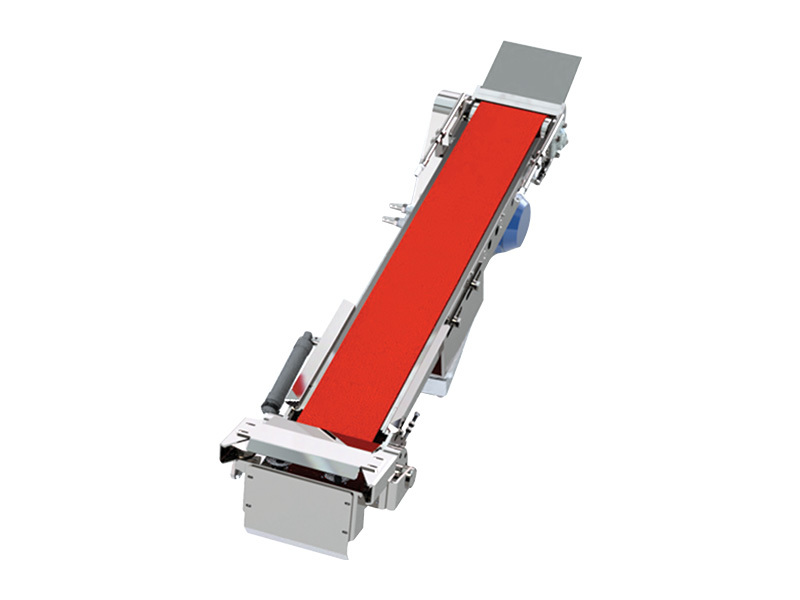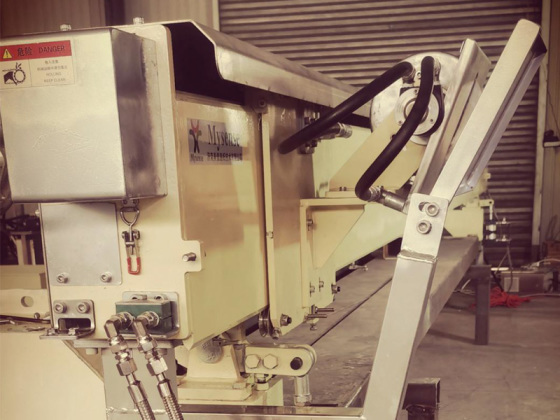Elevating Manufacturing Standards with Ropeless Automatic Tail Threading System Advancements
Published on:
2025-06-19 09:45
Introduction to Ropeless Automatic Tail Threading Systems
In the rapidly evolving landscape of manufacturing, maintaining high standards while boosting efficiency is paramount. The introduction of **ropeless automatic tail threading systems** represents a significant leap forward in this quest. These systems streamline operations, reduce downtime, and enhance product quality. By eliminating the complexities associated with traditional threading methods, manufacturers can focus on what truly matters: delivering superior products to their clients.
Understanding the Core Technology Behind Ropeless Threading Systems
Ropeless automatic tail threading systems employ cutting-edge technology to facilitate a seamless threading process. Unlike conventional methods that utilize ropes or manual intervention, these systems rely on advanced robotics and automated mechanisms. This innovation not only simplifies operations but also minimizes the risk of errors that can arise from manual threading.
Key Components of Ropeless Systems
1. **Automated Feed Mechanism**: This component ensures that yarn or thread is consistently fed into the machine without interruptions.
2. **Sensor Technology**: Integrated sensors detect the position of the thread, ensuring precision in threading.
3. **Control Systems**: Advanced software regulates the entire process, allowing for adjustments based on production demands.
The Role of Robotics in Threading Efficiency
Robotics play a pivotal role in the functionality of ropeless automatic tail threading systems. By utilizing robotic arms equipped with specialized tools, these systems can perform complex threading tasks with remarkable speed and accuracy. This automation not only boosts productivity but also significantly reduces the labor costs associated with manual threading methods.
Benefits of Ropeless Automatic Tail Threading Systems
The shift towards ropeless automatic tail threading systems brings myriad benefits that significantly enhance manufacturing operations.
Increased Efficiency and Productivity
With the elimination of manual threading processes, manufacturers can achieve higher throughput rates. The automated nature of these systems allows for continuous operation, substantially increasing output without sacrificing quality.
Enhanced Quality Control
Automated threading systems are designed with precision in mind. The incorporation of sensors and control technologies ensures that each thread is positioned accurately, thereby reducing defects and improving overall product quality. This level of consistency is crucial for manufacturers aiming to uphold rigorous quality standards.
Reduced Downtime and Maintenance Costs
Traditional threading methods often result in machine downtime due to threading errors or manual intervention. Ropeless systems minimize these occurrences, significantly decreasing downtime and related maintenance costs. This reliability translates to higher profitability for manufacturers.
Flexibility and Adaptability
Modern manufacturing requires flexibility to adapt to changing market demands. Ropeless automatic tail threading systems can be reprogrammed to cater to different products or specifications, allowing manufacturers to pivot quickly without incurring substantial costs.
Applications of Ropeless Automatic Tail Threading Systems in Various Industries
The versatility of ropeless automatic tail threading systems makes them suitable for a wide range of industries.
Textile Industry
In the textile sector, these systems are invaluable for ensuring that threads are correctly positioned in fabric production. This not only enhances the durability of the fabric but also streamlines the entire production process.
Automotive Manufacturing
Automotive manufacturers utilize ropeless threading systems for assembling components that require precise threading, such as wiring harnesses. The enhanced accuracy and efficiency lead to better product reliability and safety.
Electronics and Appliances
In electronics manufacturing, the need for precision is critical. Ropeless automatic tail threading systems facilitate accurate assembly processes, particularly in the production of circuit boards and other delicate components.
Challenges and Considerations in Implementing Ropeless Systems
While ropeless automatic tail threading systems offer numerous advantages, manufacturers must also consider potential challenges.
Initial Investment Costs
The upfront costs associated with implementing these advanced systems can be substantial. However, businesses must weigh these costs against the long-term savings and efficiency gains.
Training and Skill Development
Transitioning to automated systems necessitates training staff to operate and maintain the new technology. This investment in human capital is crucial for the successful adoption of the technology.
The Future of Ropeless Automatic Tail Threading Systems
As technology continues to advance, the future of ropeless automatic tail threading systems looks promising. Innovations in artificial intelligence and machine learning could further enhance the capabilities of these systems, leading to even greater efficiencies and reduced operational costs.
Integration with Industry 4.0
The integration of ropeless systems into Industry 4.0 frameworks will facilitate smart manufacturing processes. Real-time data analytics and remote monitoring will enable manufacturers to optimize operations continually.
Sustainability Considerations
As manufacturers strive for sustainability, ropeless automatic tail threading systems can play a role in minimizing waste and energy consumption. The precision and efficiency of these systems reduce material waste, contributing to greener manufacturing practices.
Frequently Asked Questions (FAQs)
What are the primary benefits of ropeless automatic tail threading systems?
The primary benefits include increased efficiency, enhanced quality control, reduced downtime, and flexibility in production.
How do ropeless automatic tail threading systems improve product quality?
These systems use precision sensors and automated controls to ensure accurate threading, which reduces defects in the final product.
What industries can benefit from ropeless automatic tail threading systems?
Industries such as textiles, automotive manufacturing, and electronics can significantly benefit from these advanced systems.
Are there significant costs associated with implementing ropeless systems?
Yes, the initial investment costs can be substantial, but the long-term savings and efficiency gains often justify the expenditure.
How can manufacturers ensure successful implementation of these systems?
Training staff and investing in ongoing maintenance and support are critical to ensuring a smooth transition to automated systems.
Conclusion
The advent of ropeless automatic tail threading systems marks a transformative moment in the manufacturing industry. By enhancing efficiency, quality, and adaptability, these systems are setting new standards that will shape the future of production. As businesses navigate the challenges of implementation, the long-term benefits of adopting such advanced technology are clear. Embracing these innovations not only positions manufacturers for success in a competitive landscape but also lays the groundwork for sustainable and efficient manufacturing practices.
Latest News










